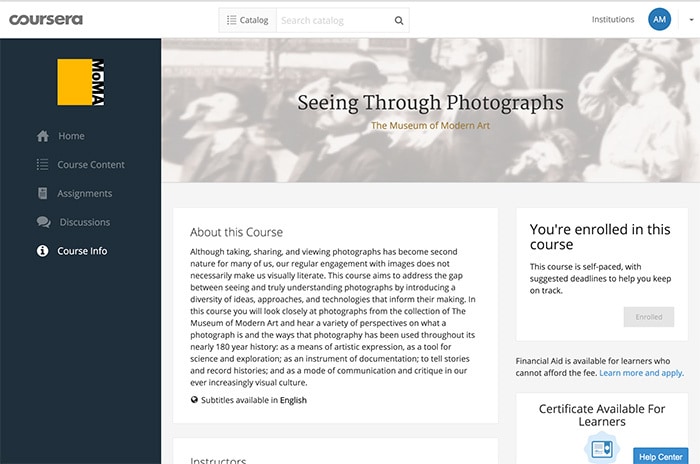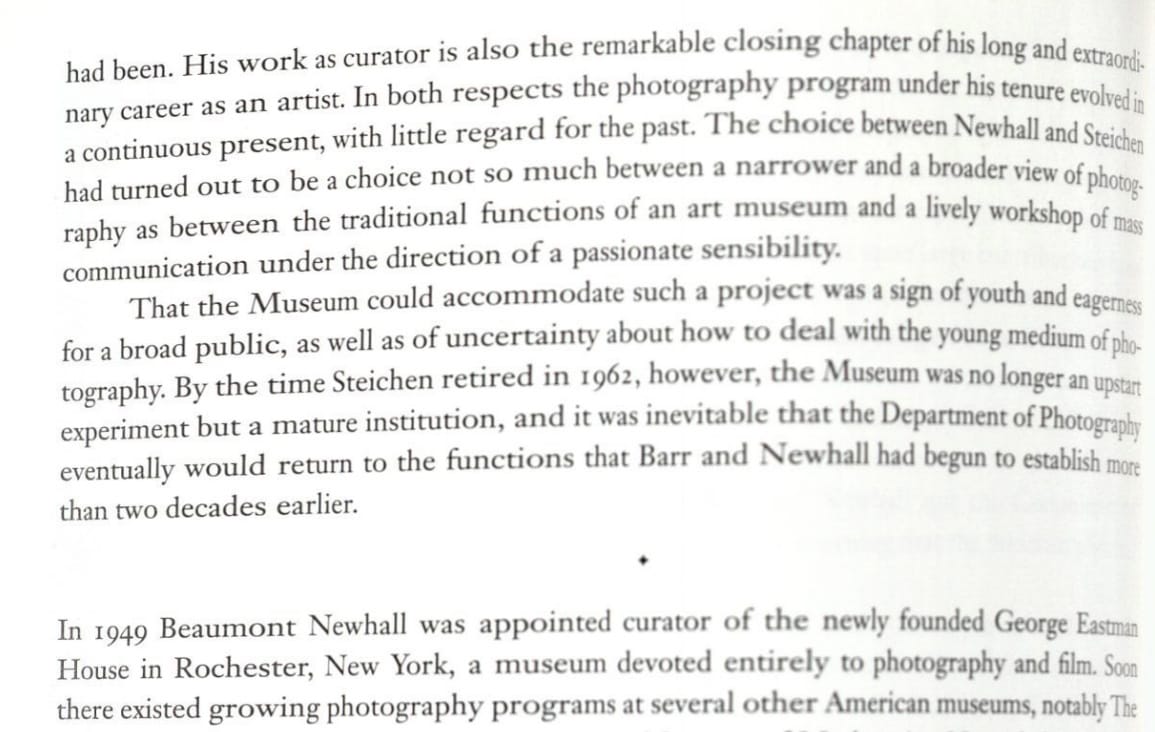Share
What I Learned By Taking MoMA’s Photography Course
Last week, the Museum of Modern Art unleashed a free online course on Coursera entitled “Seeing Through Photographs” as taught by MOMA Departme...

Last week, the Museum of Modern Art unleashed a free online course on Coursera entitled “Seeing Through Photographs” as taught by MOMA Department of Photography Curator Sarah Meister. Although I’ve watched dozens if not hundreds of YouTube videos on everything from “How to tie a bowtie” to last night’s “Coq Au Vin Recipe,” I had never taken an online course, and was intrigued by the subject matter.
For the uninitiated, Coursera is venture-backed company that develops MOOC (massive open online courses) with schools like Yale University, Johns Hopkins and more. This educational tech company is trying to disrupt the typical (and expensive) classroom environment with online courses that users can take at their own pace.
Seeing Through Photographs is an optional certificate course, which can be purchased for $49 plus successful completion of the course and tests. I chose not to pay for the certificate.
Signing up was simple, and I was able to quickly see the class syllabus and explore each week’s assignments, which consists of videos, required and optional reading, and a test to display your mastery of the material. The interface worked smoothly enough, but some of the reading assignments had poorly duplicated texts, like this excerpt from “American Photography: 1890 – 1965”:
Some of the more recent reading materials are available as PDFs, which make them infinitely easier to read while also making them savable, searchable and allowing annotations.
I’ve only completed the Week 1 assignments, but here are some impressions:
- What’s old is new again. An essay by Peter Galassi, former Chief Curator of Photography at MoMA had a few gems that sound like they could’ve been uttered yesterday:
- “Before the late 1880s, the overwhelming majority of photographs had been made by paid professionals. by 1890 anyone could do it.”
- “It was not until the 1970s that an artist-photographer, if lucky, could begin to count on print sales as a reliable source of income.”
- “Steichen had long since repudiated the ambitions he once had shared with Steiglitz, and he increasingly viewed photography not as a medium of artistic expression but as a vehicle of mass communication.”
- I learned of a few photographers that I had never heard of before including the amazing advertising photographer W. Grancel Fitz, Clarence H. White (who I probably should have known) and Adam Clark Vroman, whose images of indigenous people made me reconsider the photos of Jimmy Nelson.
- I reviewed a photo essay by Gordon Park entitled “Harlem Gang Leader”, which only increased my respect for the man and his work.
Some of the reading was a bit too academic for someone who’s been out of college for so long – overly reliant on Ivy League vocabulary (e.g. “epigone”) and flowery language. And while it would be hard to dismiss the role the MoMA has played in the acceptance of photography as art (and museum-worthy), I found the emphasis to be a bit overwhelming at times. Still, in the context of the other lessons, I’m sure my opinions will be tempered.
At the end of the lesson, the student is presented with a quiz. In this case, a 10 question quiz with a passing grade of 8. I failed in my first attempts on questions like “Which of the following artists was not featured in a Projects exhibition at MoMA in the 1970s?” I’m not sure I really care about this level of detail.
I probably won’t complete every lesson, but there are definitely lessons (e.g. Week 3’s Documentary Photography) that caught my eye. I do wish that there was an additional week to discuss the role of vernacular photography in contemporary life (e.g. Instagram, Snapchat, etc), but perhaps we need to be a bit more removed from the present to say anything meaningful about this moment in history.
As institutions looks for ways to engage their current and desired audiences, MOOCs provide an easy way to leverage institutional knowledge and make it available to the masses. MoMA has done well with their first offering, and anyone who has more than just a passing interest in photography would be well served to check it out.




